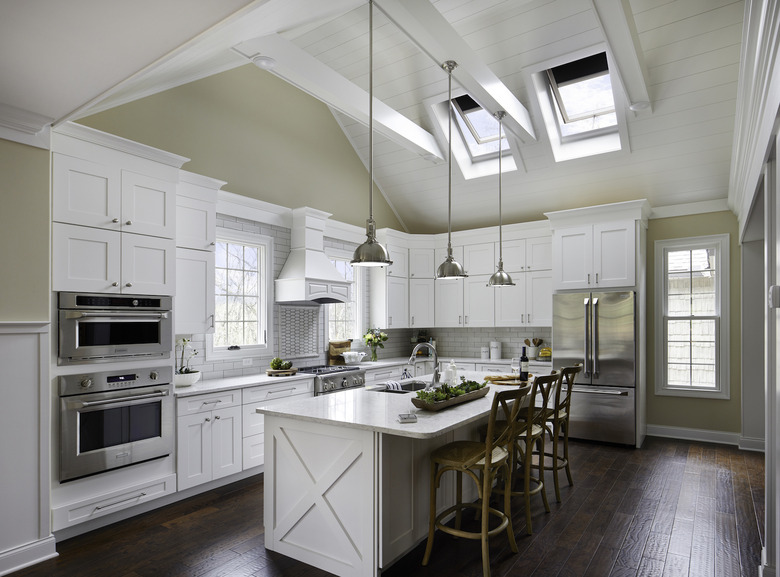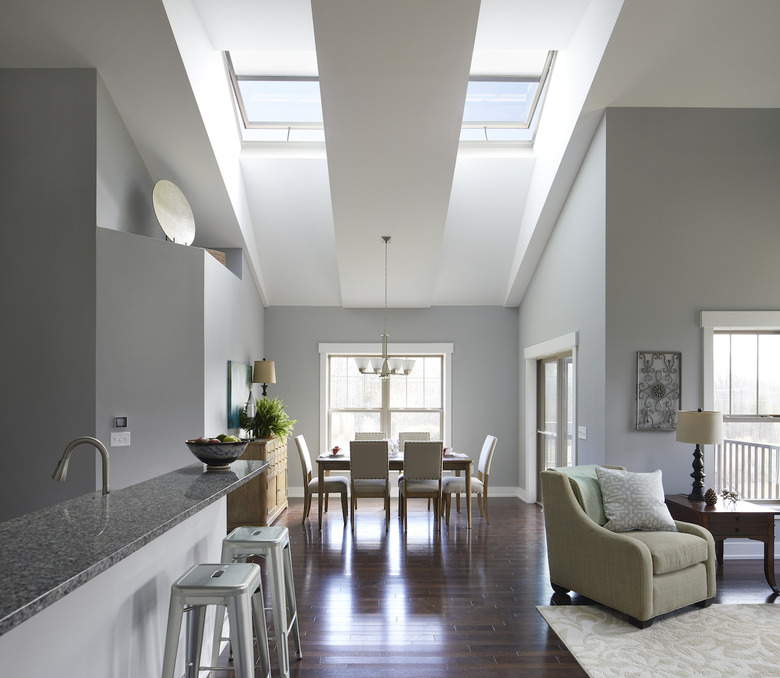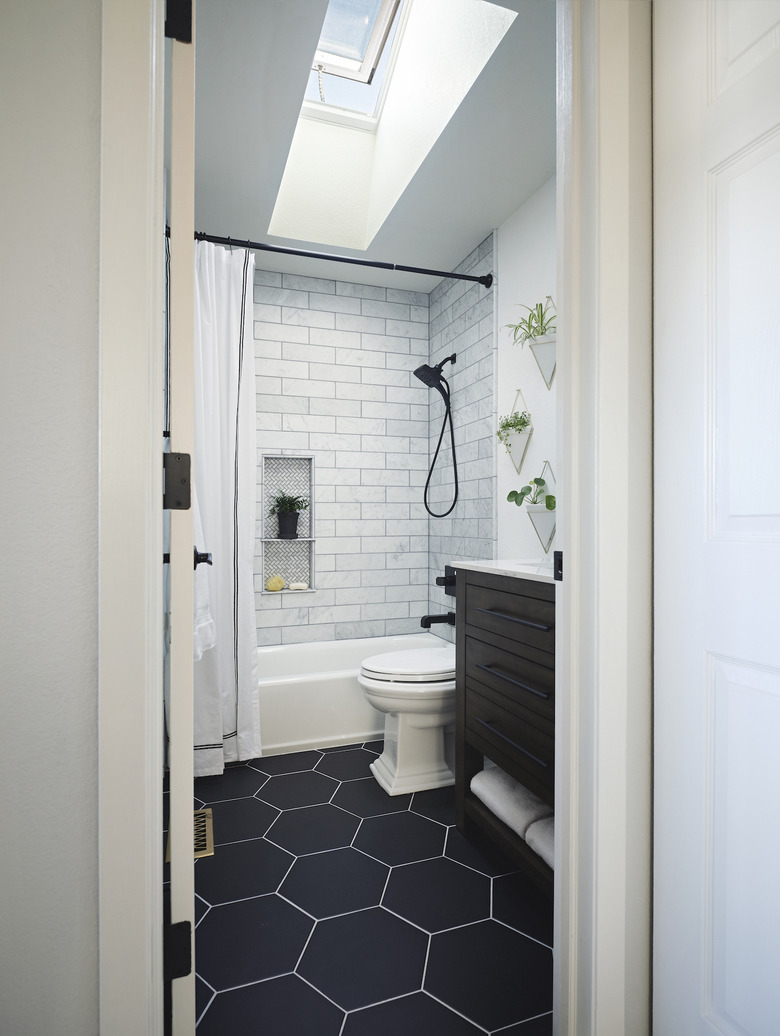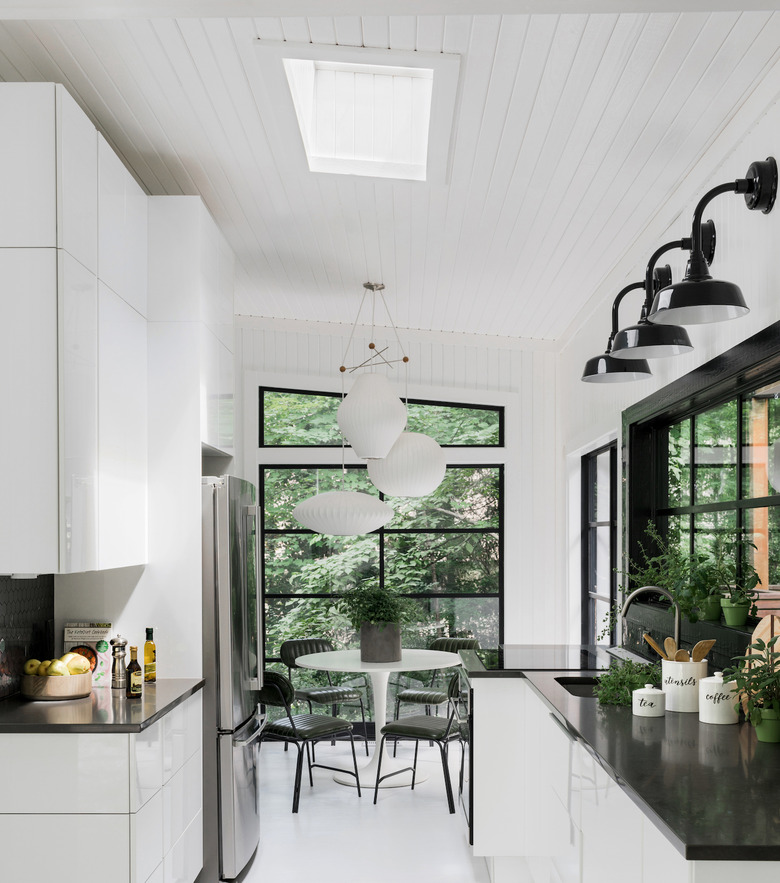Everything You Need To Know About Skylights — And Why Adding Them To Your Home Is A Design Slam Dunk
A skylight is one of those design features you'd love to have (who doesn't dream about a home filled with more natural light and fresh air?), but couldn't pull off installing in your own home, right? Well, actually, wrong. Skylights are actually more attainable (not to mention, practical) than you'd think.
"Skylights provide all-day natural light, and open for fresh air that reaches deeper into the core of the home, making spaces feel more alive," says Ross Vandermark, national product manager for VELUX Skylights — a brand whose mission is creating better living environments by inviting in natural light and fresh air through the roof.
"Natural light from above creates even lighting that helps colors appear true and brightens even dark corners," Vandermark says. "Natural light and fresh air from skylights help small rooms feel bigger, and rooms such as bathrooms and kitchens fresher." Okay, who else is already sold?
Now that you have as many reasons as you need to make this statement addition to your space, let's get down to the nitty gritty of what goes into adding skylights to your home.
1. What's the installation process like?
1. What's the installation process like?
If cutting a hole in your roof seems a little intimidating, trust that a professional will make the process seamless and super quick. You can schedule the installer visit on your own terms or even schedule a virtual design consultation with VELUX. They inspect the space, talk through your design needs, and determine the best spot for your skylights (more on that later).
"Once the installer has confirmed where the skylights are to be placed, they will prepare the interior with drop cloths to protect furniture from dust," Vandermark says. "They start by cutting out the hole in the ceiling and marking the margins of the hole to be cut in the roof by driving wood screws up through the roof."
After the roof steps are completed, the installer will use drywall to frame the skylight (if your ceiling is already vaulted) or use drywall to build an angled light shaft (if your ceiling is flat), so that sunlight spills further into the room. All in all, the installation process takes between two to five days, depending on your ceiling type and how the light shaft will be finished. Shiplap, anyone?
2. Where should you install skylights?
2. Where should you install skylights?
While every home is different, Vandermark says that bathrooms and kitchens are the best candidates for skylights because they benefit from both natural light and fresh air.
"Skylights bring in natural light without sacrificing privacy, making them ideal for bathrooms," Vandermark says. "And because they can be opened with a remote control or smartphone app, the bathroom can be refreshed with outside air on a regular basis."
Yep, you can get fresh air with the touch of a button, and sometimes you don't even have to put in that much effort—the VELUX No Leak Solar Powered "Fresh Air" Skylight closes automatically at the first sign of rain.
But bathrooms and kitchens aren't the only rooms that are skylight-approved. Living rooms, bedrooms, and even stairwells can all benefit from a boost of daylight and some fresh airflow. Plus, in your bedroom, you can automate your skylight blinds to open or close depending on the time of day — helping to synch your circadian rhythm for better sleep at night.
3. What health benefits come with having a skylight?
3. What health benefits come with having a skylight?
Indoor air pollution can be two to five times higher than outdoor pollution, so the more time you spend inside, the more vital fresh air ventilation becomes.
"Opening skylights along with a window creates air flow because warm air rises and escapes through the roof while cool, fresh air is pulled in through the window," Vandermark adds.
Plus, the mood-boosting effects of natural light have been well-documented by researchers. And come on, don't you feel a jolt of happiness when you wake up to natural light flooding into your home? We'd classify that as a health benefit too.
4. Are there any cost benefits?
4. Are there any cost benefits?
The short answer is yes. According to Vandermark, the primary benefit to your wallet is the amount of money skylights can save you on electrical lighting. Since skylights bring in twice as much daylight through the same square footage of glass as vertical windows, you don't need to use your indoor lights as much — helping you save money on electrical lighting. Is there any problem natural lighting can't fix?
Another cost-saving benefit that comes with skylights is less reliance on your air conditioner during the spring and fall. If you opt for a fresh air skylight, that extra air flow (which Vandermark calls the chimney effect) can also cool down your home more effectively. So, what are you waiting for? That natural light and fresh air magic is calling.



